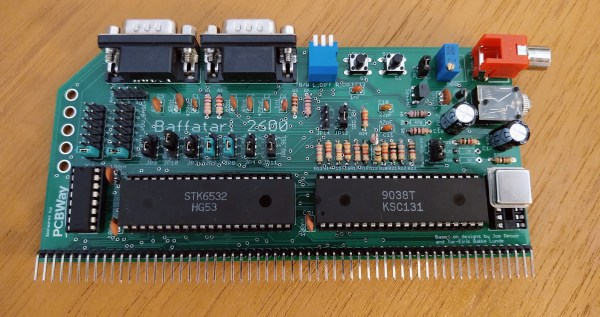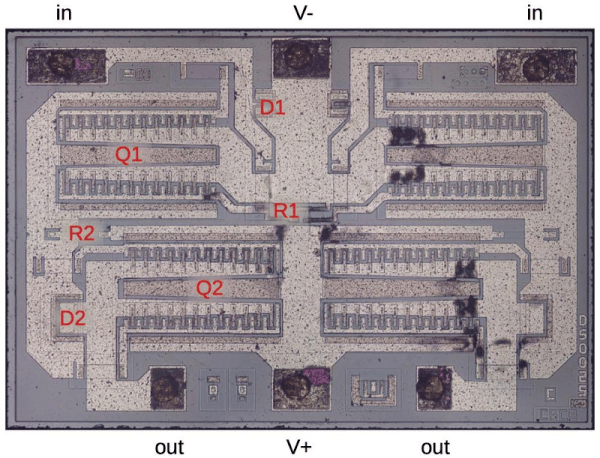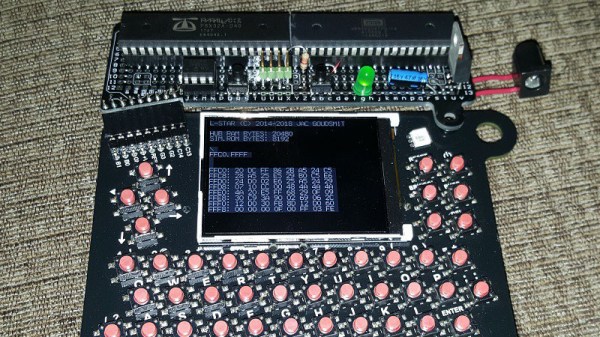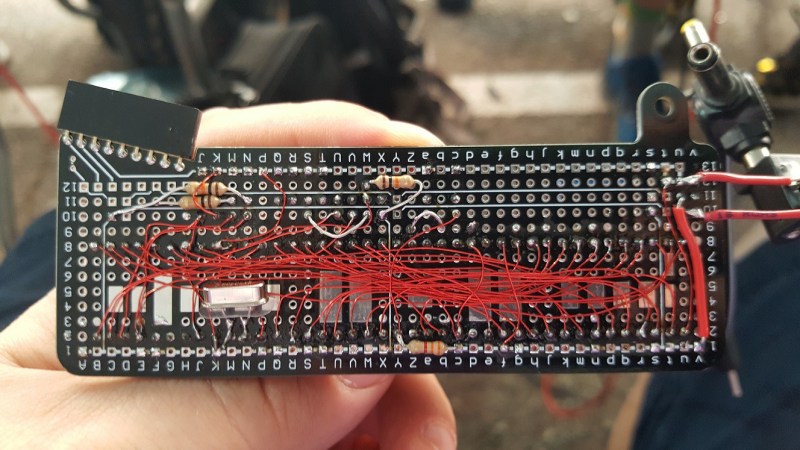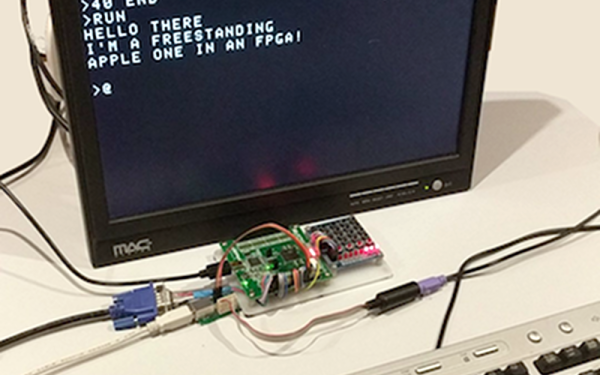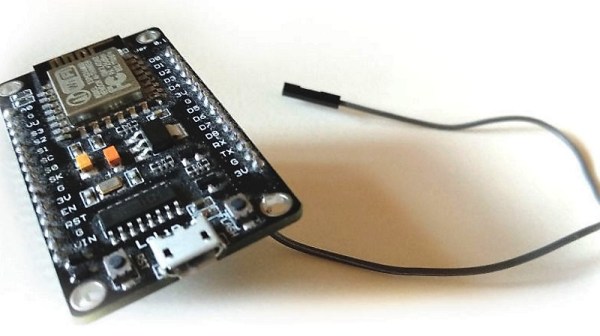In today’s “News from the Dystopia” segment, we have a story about fighting retail theft with drones. It centers on Flock Safety, a company that provides surveillance technologies, including UAVs, license plate readers, and gunshot location systems, to law enforcement agencies. Their flagship Aerodome product is a rooftop-mounted dock for a UAV that gets dispatched to a call for service and acts as an eye-in-the-sky until units can arrive on scene. Neat idea and all, and while we can see the utility of such a system in a first responder situation, the company is starting to market a similar system to retailers and other private sector industries as a way to contain costs. The retail use case, which the story stresses has not been deployed yet, would be to launch a drone upon a store’s Asset Protection team noticing someone shoplifting. Flock would then remotely pilot the drone, following the alleged thief back to their lair or hideout and coordinating with law enforcement, who then sweep in to make an arrest.
Apple 17 Articles
Hackaday Prize 2022: The Baffatari 2600 Adds Atari Compatibility To Retrocomputers
Like today’s Intel-AMD duopoly, the market for home computer CPUs in the 1970s and ’80s was dominated by two players: Zilog with their Z80, and MOS Technology with their 6502 processor. But unlike today, even if two computers had the same CPU, it didn’t mean the two were software compatible: differences in memory layout, video interfaces, and storage media meant that software developed for an Atari 2600 wouldn’t run on an Apple I, despite the two sharing the same basic CPU architecture.
[Augusto Baffa]’s latest modern retrocomputer design, the Baffatari 2600, cleverly demonstrates that the difference between those two computers really is only skin-deep. The Baffatari is a plug-in board that adds Atari 2600 functionality to [Augusto]’s earlier Baffa-6502 system, which was designed to be Apple I-compatible. Since both the Apple and the Atari are powered by 6502 CPUs, only a few peripherals need to be swapped to change one into the other.
Sitting on the Baffatari board are two chips essential to the Atari 2600’s architecture: the 6532 RAM I/O Timer (RIOT) that contains the RAM and joystick interface, and the Television Interface Adapter (TIA) that handles the graphics and audio. These chips connect to the Baffa-6502’s system bus, enabling the main CPU to communicate with them and run Atari 2600 software titles. In the video embedded below, you can see several classic games running on the Baffa system.
The basic idea is similar to this RC2014 plug-in board that enables a Z80-based retrocomputer to run MSX and Colecovision titles. In fact, [Augusto] also built such a board for his earlier Z80 project.
[Ken Shirriff] Takes A Bite Of The Apple-I
The Apple-I was a far cry from Apple’s later products. A $666 single-board computer, the product had some unique design features including using a shift register for video memory to save money. The shift registers of the day required high-current clock pulses that ranged from -11 to 5V and there was a DS0025 clock driver chip to handle the job. [Ken Shirriff] takes the unusual chip apart for us in a recent blog post.
The use of a shift register as memory isn’t a new idea. Really old computers like EDSAC used mercury delay lines as memory which was essentially a physical shift register. In those cases, the ALU and other processing only had to deal with a bit at a time, further simplifying things. For the Apple, there were seven shift registers to store 6-bits of display data and a cursor position. The 6 bits of character data drove — indirectly — a character generator ROM to convert the data into dots for the display.
Driving all those shift register flip flops requires a lot of clock current, so the DS0025 uses an unusual transistor design. There are 24 separate emitters in two groups. It acts like a large transistor, but you could also consider it as two 12-emitter transistors or 24 separate transistors in parallel. The metal wiring, interestingly enough, tapers because at the start of the conductor, the current for all 12 sub-transistors flows, but by the end, it is only the current for the last sub-transistor, so the conductor doesn’t have to be as wide. In addition, the two transistors have to have matched resistance which requires careful design so the transistors turn on at the same time.
The final result is an inverter that can provide 1.5 amps. This current helps overcome the relatively large capacitance in the shift register’s clock line. The clock rate was 1 MHz and the load capacitance was about 150 picofarads.
We enjoy [Ken’s] posts ranging from mysteries to space hardware. It is always interesting to see what is inside these devices or, at least, what was in the old devices we’ve all seen.
Apple 1 Emulator Is A Perfect Fit For Supercon Badge
Supercon badge hackers had to be ready to present their show-and-tell by 6 pm Sunday evening. This ruthless unmoving deadline meant every badge hack on stage represents an accomplishment in time management, and some luck, in addition to their own technical merits. But that deadline also meant a few fantastic projects lost their race against the clock. We were rooting for [Jac Goudsmit] to build an Apple I emulator as his badge expansion, but he wasn’t quite done when our badge hack ceremony began. After Supercon he went home, finished the project, and documented everything in a detailed writeup.
Our 2018 Supercon badge is built on a retro-computing theme, and the default firmware came with a BASIC interpreter as well as a Z80 emulator running CP/M. So an Apple 1 emulator should feel right home with its contemporaries. Mechanically speaking, all the parts were a tight fit on the badge expansion board given out to every attendee at Supercon. So tightly that [Jac] had to file down the two main chips in order to fit them side by side. The breadboard-like pattern of connected holes on the expansion board, intended to help ease in beginners for their badge hack soldering, proved to be an inconvenience in tightly packed arrangements such as this.
With all the work [Jac] had invested, it was heartbreaking to know he was only five minutes of soldering and 30 minutes of coding away when time ran out. Time pressure was part of the challenge faced by every Supercon badge hacker, and while we’re sad [Jac] missed the deadline for stage time we’re happy to see him finish and write it all up. We hope every badge hacker would write up their stories of frantic weekend projects. Those who do so on hackaday.io are encouraged to tag their project with “Supercon” and get them added to our list of badge hacks for everyone to admire.
Pristine Apple I Sells At Auction For A Jaw-Dropping Price
If you think Apple products are overpriced now, wait until they’re 50 years old.
This original Apple I recently sold at auction for $375,000, making it one of the most expensive 6502-based computers in history. Given that only something like 60 or 70 of the machines were ever made are known to exist, most built by hand by [Jobs] and [Wozniak], it’s understandable how collectors fought for the right to run the price up from the minimum starting bid of $50,000. And this one was particularly collectible. According to the prospectus, this machine had few owners, the most recent of whom stated that he attended a meeting of the legendary Homebrew Computer Club to see what all the fuss was. He bought it second-hand from a coworker for $300, fiddled with it a bit, and stashed it in a closet. A few years later, after the Apple ][ became a huge phenomenon, he tried to sell the machine to [Woz] for $10,000. [Woz] didn’t bite, and as a result, the owner realized a 125,000% return on his original investment, before inflation.
The machine was restored before hitting the auction block, although details of what was done were not shared. But it couldn’t have been much since none of the previous owners had even used the prototyping area that was so thoughtfully provided on the top edge of the board. It was sold with period-correct peripherals including a somewhat janky black-and-white security monitor, an original cassette tape interface, and a homebrew power supply. Sadly, there’s no word who bought the machine – it was an anonymous purchase.
Hackers, check your scrap bins. Anything hanging out there that might be worth six figures in a few decades? It’s unlikely, but if you get lucky, hacking just might turn into your retirement plan.
Thanks to [my wife] for the tip on this one.
Apple One, On FPGA
Today, Apple is known for iPhones, iPads, and a commitment to graphical user interfaces. But that wasn’t how it all started. The original Apple was a single board computer built around a 6502. In 1976, you could snag one for $666.66, but you needed to supply your own TV, power supply, and keyboard. [Alangarf] didn’t have an Apple 1, but he did have a 6502 CPU core for FPGAs from [Andrew Holme] that he fleshed out to an Apple I clone with a VGA output and PS/2 keyboard port. The project works with either an iCE40 board or a Terasic DE0 board. You could probably port it to other similar FPGAs.
This is much more practical than trying to find an original, as Apple bought a lot of the old boards back and destroyed them. According to the Apple-1 Registry there are only about 71 of the boards still in existence, and that’s with the annotation that 4 of those may be lost and 8 might be duplicates. We’ve heard that of those there are only six that actually still work.
Espple: A Wireless Apple 1 On An ESP8266
The Apple 1 was one of the three big hobbyist computers that burst onto the scene in 1977. Unlike the PET 2001 and the TRS-80, only a couple hundred Apple 1s were ever produced, and with only a handful in existence today, you’ll have to fork out some serious money to get a Wozniak original for yourself.
The Apple 1 experience is easily emulated, of course, but this ESP8266 emulates the Apple 1 on hard mode. Dubbed the Espple by its creator [Hrvoje Cavrak], it emulates the 6502-based original in all its 1-MHz glory, while providing 20-kB of RAM, a considerable upgrade over the 4-kB standard. The complete original character set is provided for that old-timey feel, and there’s a BASIC interpreter ready to go. The kicker here, though, is that the emulator is completely wireless. You telnet into the 8266 rather than connecting a keyboard directly, and video is transmitted over-the-air using a GPIO pin as a 60-MHz PAL transmitter. A short length of wire is all you need to transmit to an analog PAL TV on channel 4; the video below shows a little BASIC code running and a low-res version of Woz himself.
You’ll find Apple emulators aplenty around these parts, everything from an Apple ][ on an Arduino Uno to a tiny Mac on an ESP32. There hasn’t been much in the way of Apple 1 emulations, though, at least until now.


